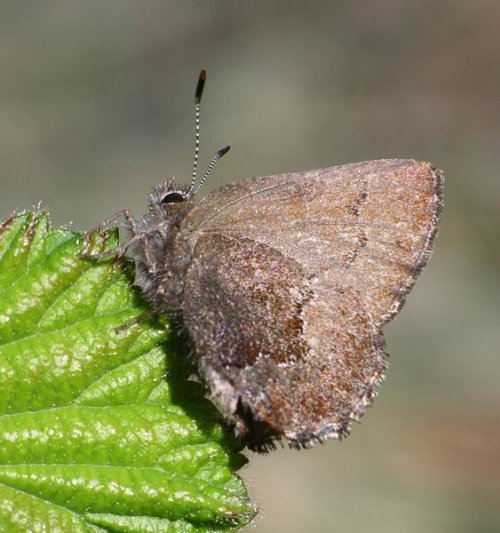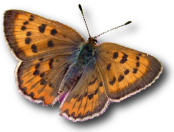
Although this species has been divided into several subspecies, some with very small ranges, all our populations are considered subspecies windi. One of our earliest-flying species - generally only 2-3 weeks after snowmelt - and therefore very easy to miss. Although it does occur in the Coast Range near Lake Berryessa, it is unrecorded at Gates Canyon. In the Sierra it occurs at Washington, Lang Crossing, and Donner. At lower elevations (5000' and below) usually found on cool, damp north-facing cliffs with mats of Sedum, the host plant. Commonly the males perch on trees or shrubs in the sun on the opposite, south-facing side of the canyon! At Donner found at the east end of the pass in granite rock gardens near the Donner Lake overlook, where Sedum grows in the cracks; the males perch on Huckleberry Oak. March-April (Washington) to June (Donner). Absent from Castle Peak, where the alpine zone is all volcanic and there is no Sedum. (A different Sedum grows on mudflows at Carson Pass.) Usually the larvae are easier to find than the adults; they are usually purplish-red and stand out when feeding on the yellow Sedum flowers.
